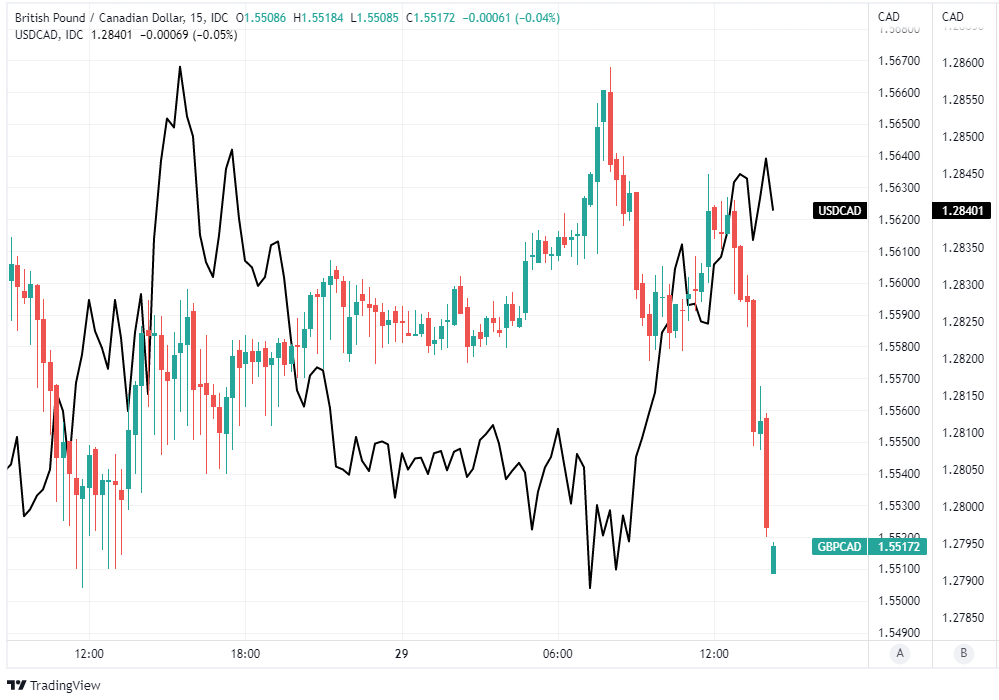Canadian Dollar Boosted by Economy's Resilience
- Written by: James Skinner
-
“Construction activity was impacted by a strike by construction workers in Ontario. Oil production declined, in part due to maintenance at major oil sands facilities,” - Carrie Freestone, RBC Capital Markets.

Image © Adobe Stock
The Canadian Dollar outperformed Pound Sterling and many other major currencies in the final session of the week after the local economy proved more resilient in May than markets had anticipated with possible implications for interest rate policy at the hawkish Bank of Canada (BoC).
Canada’s economy stalled in May following large declines in output across the manufacturing and construction industries but that was a better outcome than the modest contraction of -0.2% that Statistics Canada had warned was likely in its earlier announcement of figures for April.
“For Q2 as a whole, growth is running at roughly a 4.5% annualized pace, which is slightly above the Bank of Canada's 4% MPR forecast,” says Andrew Grantham, an economist at CIBC Capital Markets.
“That solid growth, combined with the details of today's data which suggests supply constraints, rather than slowing demand, were holding back overall growth, means that the Bank of Canada is still on course to deliver another non-standard rate hike at its next meeting,” he added.

Canada’s economy had been expected to give back in May some of the 0.3% expansion recorded for April but was spared from contraction by a strong performance from services producing industries where output rose by 0.4% to offset a -1% decline in smaller construction and manufacturing sectors.
“Construction activity was impacted by a strike by construction workers in Ontario. Oil production declined, in part due to maintenance at major oil sands facilities,” says Carrie Freestone, an economist at RBC Capital Markets.
The data implies that Canada’s economy is outperforming Bank of Canada expectations and has possible implications for interest rate policy due to the BoC’s judgement that “excess demand” is partially responsible for driving local inflation rates higher in recent months.
Continued increases in inflation and rising expectations for price growth saw the BoC shock financial markets earlier in July with a 1% increase that took the benchmark cash rate up from 1.5% to 2.5%. This was sixth time in its history that the BoC has raised its cash rate by 1% in single sitting.
“Advance information indicates that real GDP increased 0.1% in June as output was up in the construction, manufacturing, and accommodation and food services sectors,” Statistics Canada said on Friday.
“On a quarterly basis, this advance information for real GDP by industry indicates a 1.1% increase in the second quarter,” Statistics Canada also said.
The Canadian Dollar showed resilience in the face of a rising U.S. Dollar in the wake of Statistics Canada’s announcement while many other currencies were in retreat, leading the Loonie to rise against all other G10 counterparts except the Norwegian Krone, Swedish Krona and Japanese Yen.
This price action took place as financial markets responded to figures emerging across the border in the U.S. and suggesting that inflation and wage costs rose further than was envisaged by consensus last month, with possible implications for Federal Reserve interest rate policy in September.
“Really though, USDCAD should be trading lower,” writes Shaun Osborne, chief FX strategist at Scotiabank, in a Friday note.
“Chart patterns suggest another failed attempt to push under noted, key support at 1.2790 (61.8% Fib retracement of the Jun/Jul move up). Hourly and 6-hour charts show spot making a significant, bullish intraday reversal,” he addeds.

